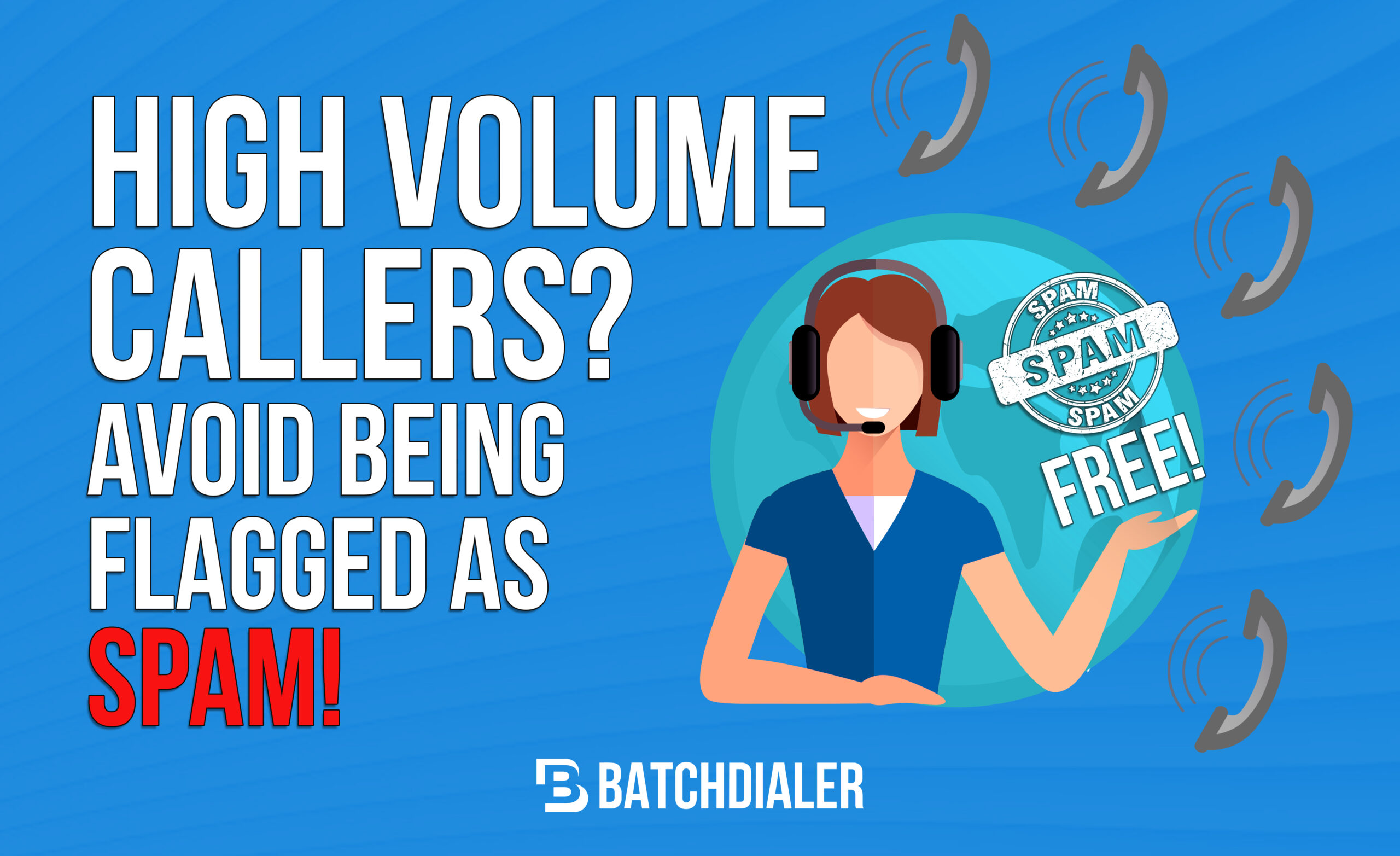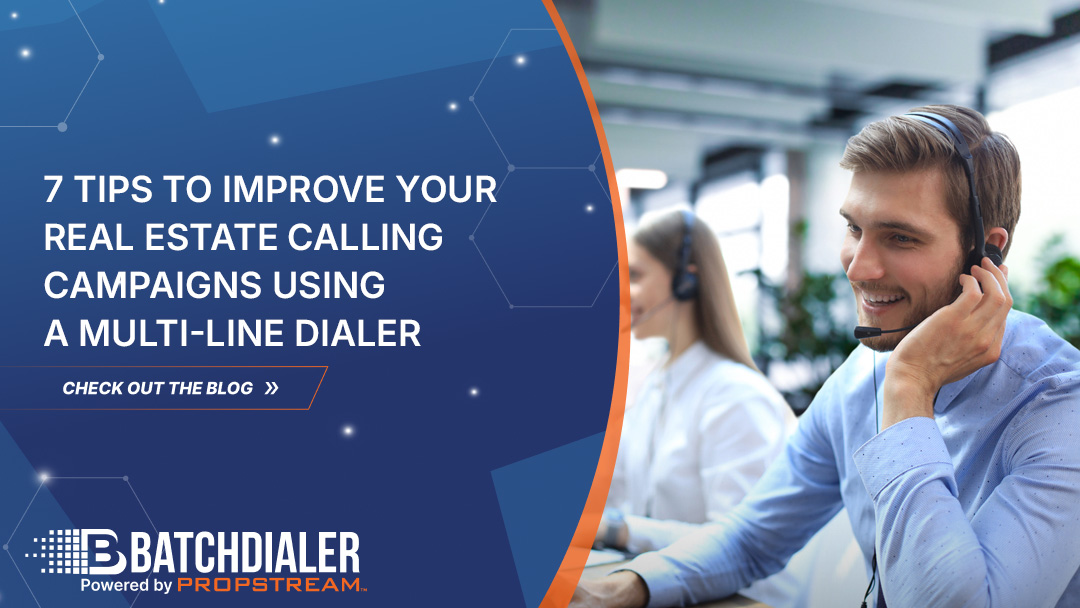It’s 2023, and despite all the controversies around cold calling, it continues to be one of the most effective ways of generating leads. But here’s a fact– cold calling can be dead for your business if your numbers get labeled as “spam.” And chances are you would if you’re a high-volume caller.
According to a report by Truecaller, the number of people losing money due to spam calls has risen from 43 million (17%) in 2019 to 56 million (22%) in 2020, and the average reported loss has increased from $244 to $351.
This is why people have started to use various applications that help them stay from spam calls, and even the service providers are taking measures to protect their customers. Now, this creates an alarming situation for several businesses that use cold calling as a primary source of lead generation.
But here’s some good news– there are some best practices that you can use to avoid getting labeled as a Spam Call. And this guide is all about that.
What is a High-Volume Caller?
Addresses that make over 20,000 calls per month are generally labeled high volume callers by phone carriers. This label alone does not mean anything except to note the large quantity of outbound call traffic from the number or physical address. Still, it does increase the risks of being labeled as a spam caller or potential spam caller. If that happens, you may find people unwilling to answer calls from your numbers when cold calling.
If you are labeled a potential spammer, it can be confusing the first time, especially if you are new to cold calling. Don’t worry, though; it is normal, and it happens to many high-volume callers who are not spammers. It’s also worth making sure you use any list scrubber utilities you have at your disposal to automatically trim problem numbers in addition to following the other tips given here.
What Does a Potential Spam Call Mean?
If you are labeled as a potential spammer, it simply means the carrier who serves the number you are calling or your carrier has flagged you as such. It can happen for a variety of reasons; it is not permanent and it does not mean you’ve broken any regulations like the TCPA. The decision about who to flag is made individually at the carrier level, too, so if you get flagged by one, you may not be flagged by the others right away or at all.
Sometimes potential spammers are labeled as spam without the potential, but it means roughly the same thing. Carriers that mark calls as spam typically respond that individuals have reported the number for bad behavior enough times to cross whatever arbitrary threshold they have set. Since any call recipient can report any number, it’s not uncommon for cold callers to get mistakenly thrown on the list. Just remember, spammers, don’t leave voicemails or contact information. Keep making sure your cold calling behavior does not resemble a spammer, and you will get through the process of removing that status from your number.
How Your Calls Get Flagged as Spam?
As the number of phone scams increased, the Federal Communications Commission (FCC) passed several rules to protect the public from getting scammed. Now the call centers are advised to comply with those acts in order to not to get flagged. However, even after following all the guidelines, there’s no guarantee that you will not get flagged as a spam number.
As a high-volume caller, there are multiple ways your outbound call might get flagged. Here are the ways:
Consumers
When consumers get calls from unknown numbers, there are chances that they block it even before answering it, and if your numbers get blocked enough times, then your number risks having the spam label attached to it. Now the situation can be harmful even for high volume callers who are legitimate as their potential customers might already be irritated because of spam calls.
Call-Blocking Apps
Many call blocking apps protect their users from fraudulent calls, and in the process, they sometimes also unknowingly tag high-volume callers as spam numbers. These apps are basically developed to identify, report as well as block spam numbers. Now, these apps have algorithms that are significantly dependent on the users’ responses.
Carriers
Most of the carriers have built-in thresholds that monitor all the call activities. For instance, if a single number makes ten calls a minute, over 100 calls a day, or over certain calls a week, the carrier automatically determines that the calls can’t be made from human dialing. The carrier might assign a flag score to your number in such cases, indicating that this can be robocalling.
There are several spam filters that catch high-volume callers as they often have calling patterns that are similar to that of the spammers.
How Can Getting Flagged Affect Your Business?
If your number shows “spam likely,” the answer rate of your calls is going to go down significantly. Now to reach out to more potential customers, you will need to make more calls, and making more calls means that you need to invest more money. Moreover, it can also affect your customer experience. It might affect your trust score in front of both existing customers and potential customers.
Several highly dependent industries on time-sensitive communications, such as healthcare or education, may get affected more negatively. Some also wait to check the number of calls made by a number in a specific time span and then flag them if they look suspicious.
How to Avoid Getting Flagged: A Few Tips to Consider
Know the Guidelines
The first thing that you need to do is, comply with regulations established by the FCC. The FCC has its own set of guidelines that a company must follow to avoid being flagged.
One of the guidelines included in the Telemarketing Sales Rule (TSR) states that telemarketers aren’t allowed to call people who are in the National Do Not Call Registry. As a caller, it’s your responsibility to follow this rule and don’t call people who come under this category. If you continue calling them, they might block you, and you can get labeled as a spammer.
Focus on User Experience
If you make your customers answer your calls or call you back, you’re nothing like a spammer. Also, this quality experience and allowing your customers to check who’s calling will establish a sense of trust and prevent your customers from blocking your number.
One of the best strategies to make your customers pick your calls is to track the time of the day when they are available to take calls and then call them at that time. This way, people will start to pick up your calls more, and that will reduce the chances of getting flagged. And if your customers don’t answer, make sure to leave a voicemail to let them know who you are and why you were calling them. This will allow them to know about you and lessen the chances of them reporting your number.
Use a Few Different Numbers
When you use different numbers to call potential customers or even existing ones throughout the day’s call, you reduce the number of calls per hour or per day made by a single number. As a result, your numbers will not get automatically flagged by the carrier or the service providers.
Bonus: What if your Number has Already Been Flagged?
If your number has already been flagged as spam, it’s no end of the world. You can always reach out to telephone carriers if they have mistakenly labeled your number. However, each of the carriers has different processes, and you will need to contact them and ask them to remove the tag. They might verify the numbers first, and once they are done with the process, they might remove the label.
To Sum Up
If your business depends upon cold calling, your primary focus should be looking legit to your potential customers. If you get labeled as a spammer, the answering rate will decrease, and so will your revenue. After all, your number is the first thing that your potential customers will see.
To avoid being flagged, it’s imperative to take measures. Use these techniques and reduce the chances of getting flagged. And remember, you are selling the solutions to your customers’ problems and not your products. Make sure your listener understands this fact.



